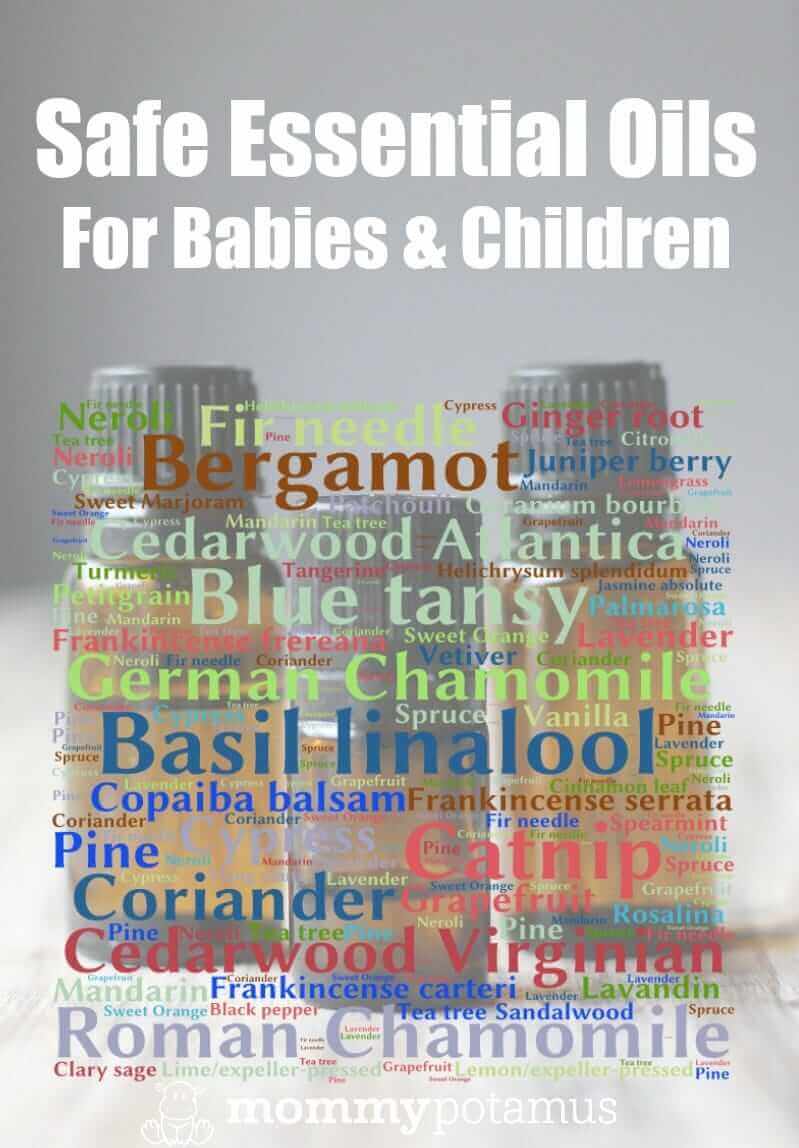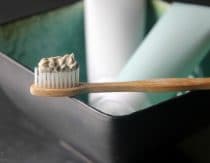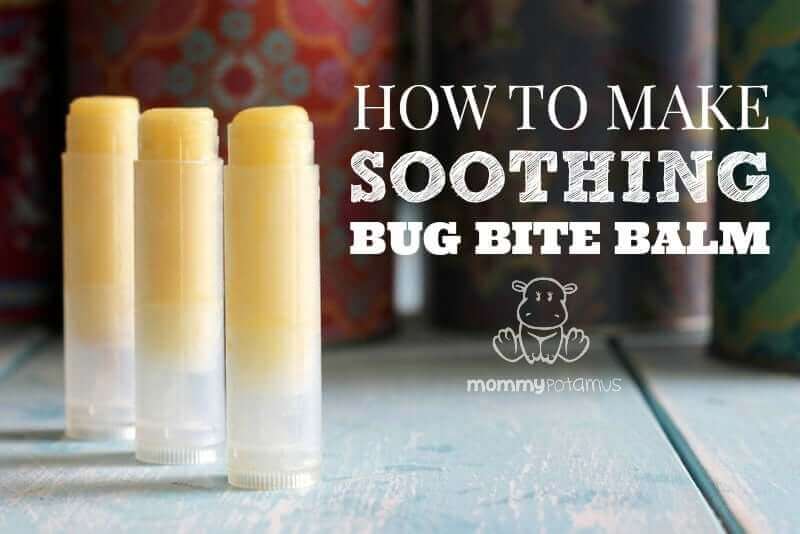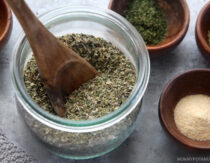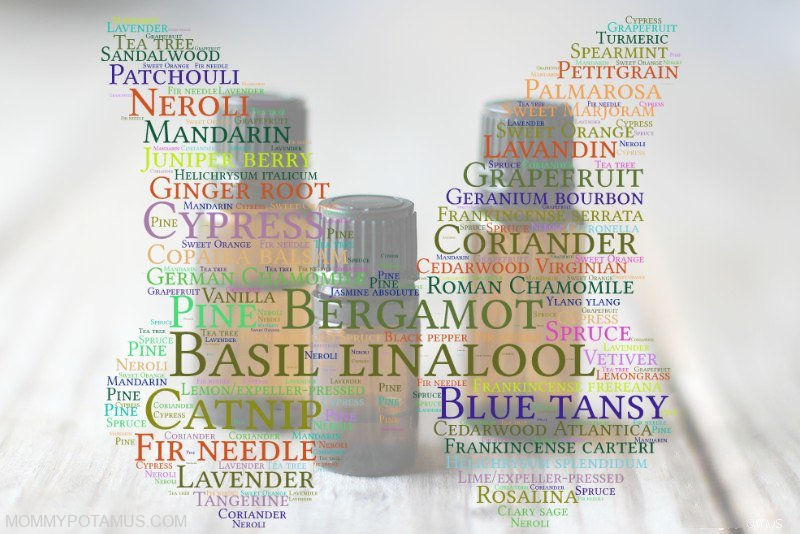
Which essential oils are safe for kids? If you’ve tried to answer that question by researching online lately, you know that there is a ton of conflicting information out there. Some say everything is safe, some say nothing is safe. What’s a mama to do?
A few years ago, I decided to get over my sticker shock and try to answer that question for myself. I purchased a copy of Essential Oil Safety, which was written by world renowned essential oil expert Robert Tisserand and his co-author, Rodney Young. Considered the most evidence-based resource available, Essential Oil Safety took 10+ years to write and contains over 4,000 citations.
Safety is my top priority, so whether it’s this DIY bug bite balm, this “breathe easy” vapor rub, or another natural remedy or beauty recipe, I always consult Essential Oil Safety while creating products for my family and yours.
Of course, there are a lot of essential oil uses I haven’t covered (yet!) here, so I thought I’d put together this handy-dandy guide to when – and when NOT – to use essential oils with children. Based on Tisserand’s work, the guide below covers which essential oils are appropriate based on age and method of use (diffusion or topical application).
I’ve also linked to a brand I love for its quality, commitment to providing safe usage instructions, and pricing.
As always, none of these statements have been evaluated by the FDA, this article is not medical advice, and it is not meant to diagnose or treat any condition. Now that we’ve got that out of the way, let’s dive in.
Why dilute essential oils?
Though there are times when certain oils can be applied undiluted or “neat,” diluting essential oils is generally recommended for topical use, especially for little ones. There are two primary benefits of this approach:
- It may increase absorption by spreading the oil over a larger surface area
- It decreases the likelihood of a negative reaction
In addition to topical application, essential oils can also be diffused into the air. According to Tisserand, inhaling essential oils is a very efficient way to absorb them quickly into the bloodstream, making this form of aromatherapy a preferred method of delivery for many circumstances.
In general, topical application is preferred for skin irritations and other region-specific needs, while diffusion is preferred to support general wellness.
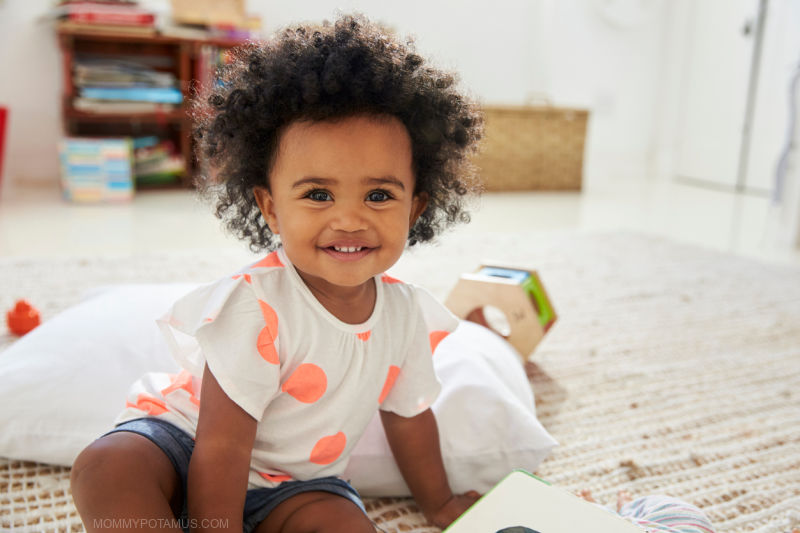
Essential Oils That Are Considered Safe For Children 2 And Under
There are many oils that can be diffused safely or applied topically when used appropriately. The recommended dilution ratio for this age group is .25%, which is 1 drop per 4 teaspoons carrier oil.
I personally would not apply essential oils topically to a child under three months old. As essential oil experts Robert Tisserand and Rodney Young explain:
Great caution is necessary for infants. Since neonatal skin does not mature until three months of age, it is more sensitive and more permeable to essential oils. A newborn is also less equipped to deal with any adverse effects than an adult because of lower metabolic capacity, i.e., enzymes present in lower concentrations. (11) These cautions apply even more to premature babies, and here it would be prudent to avoid all use of essential oils.” (Essential Oil Safety, p. 48-49)
Essential Oils for Diffusing or Topical Application (2 And Under)
Although it is not a definitive list, below are 65 oils that are considering appropriate for diffusing or occasional diluted topical application for kids two and under.
I’ve also included some of the therapeutic properties of each oil alongside its name.
- Amyris (Amyris balsamifera) – Woodsy, calming and stress relieving. Helpful for improving the appearance of fine lines.
- Balsam Fir (Abies balsamea) – Fresh, evergreen scent. Sometimes used in beauty products to support skin texture.
- Bergamot (Citrus bergamia) – Bright, clean, uplifting citrus scent. Bergamot is phototoxic unless you purchase one that is filtered to be bergaptine-free. If not using bergaptine-free, a maximum dilution of 0.4% (about 5 drops in 4 tablespoons carrier oil) is recommended to avoid phototoxicity.
- Bergamot, Mint (Mentha citrata) – Light and citrusy, this oil supports relaxation, mental clarity and healthy respiratory function.
- Black Pepper (Piper nigrum) – Spicy scent, helpful for soothing achy muscles.
- Black Spruce (Picea mariana) – Evergreen aroma, supports healthy respiratory function.
- Blue Tansy (Tanacetum annuum) – Also called Moroccan blue chamomile, this oil has skin soothing properties. It may also promote feelings of being clear-headed when pollen counts are high. May interact with antidepressant medications (MAOIs, SSRIs and bupropion antidepressants) and possibly other medications.
- Blue Cypress (Callitris intratropica) – Fresh and woodsy, helpful for emotional groundedness, easing skin irritations and supporting respiratory function. Not for use while pregnant, if you’re intending to become pregnant, or nursing.
- Cardamom (Elettaria cardamomum) – Spicy and sweet, helpful for fatigue and car/boat associated queasiness.
- Catnip (Nepeta cataria) – Relaxing, helpful for restful sleep and very useful in homemade bug spray.
- Cedarwood, Atlas (Cedrus atlantica) – Calming, skin smoothing, and smells amazing in this Wild Vanilla No. 2 Solid Perfume Recipe.
- Cedarwood, Himalayan (Cedrus deodara) – Smokey and woody, helpful for supporting skin clarity and respiratory function.
- Cedarwood, Texas (Juniperus mexicana) – Woody and sweet, Texas cedarwood is calming, immune supportive, and helpful for keeping summer pests away.
- Cedarwood, Virginian (Juniperus virginiana) – Lovely woodsy scent, relaxing and beneficial for skin. It’s also one of the recommended oils in my children’s vapor rub.
- Chamomile, German (Matricaria chamomilla L) – Relaxing, helpful for sleep, may support clear thinking when pollen counts are high. May interact with antidepressant medications (MAOIs, SSRIs and bupropion antidepressants) and possibly other medications.
- Chamomile, Roman (Chamaemelum nobile) – Relaxing, helpful for sleep, helpful for soothing sore muscles.
- Cinnamon Leaf (Cinnamomum verum) – NOT cinnamon bark. Smells lovely when diffused during the holidays. Can have a warming effect when applied to the skin, but it can cause irritation if too high a concentration is used. The maximum recommended dilution in Essential Oil Safety is 0.6% (about 7 drops in four tablespoons carrier oil)
- Citronella (Cymbopogon winterianus) – Great addition to homemade bug spray, can also be used to make outdoor citronella candles.
- Clary Sage (Salvia sclarea) – Helpful for relaxation and restful sleep.
- Copaiba Oleoresin (Copaifera officinalis) – Supports healthy respiratory function and soothes achy muscles.
- Coriander (Coriandrum sativum) – Soothes upset tummies and calms emotions.
- Cypress (Cupressus sempervirens) – Supports healthy respiratory function, thought to have an emotionally grounding effect during challenging experiences.
- Dill Weed (Anethum graveolens) – Helpful for digestion. Supports immune function. The maximum recommended dilution for this oil is 1.2% (about 7 drops in two tablespoons carrier oil). May interact with diabetes medication.
- Fir, Douglas (Pseudotsuga menziesii) – Clean evergreen scent, helpful for supporting respiratory function.
- Fir Needle (Abies sibirica) – Supports healthy respiratory function.
- Fragonia (Agonis fragrans) – Smells a lot like eucalyptus and supports healthy respiratory function, works well in homemade vapor rub.
- Frankincense Carterii (Boswellia carteri) – Immune support, helpful for soothing cuts, bruises and other injuries, relaxing, also thought to promote youthful looking skin.
- Frankincense Frereana (Boswellia frereana) – Immune support, helpful for soothing cuts, bruises and other injuries, relaxing, also thought to promote youthful looking skin.
- Frankincense Serrata (Boswellia serrata) – Calming, thought to promote youthful looking skin. Maximum recommended topical use is 3% (3 drops per teaspoon of carrier oil).
- Geranium Bourbon (Pelargonium x asperum) – Very helpful in homemade tick spray.
- Ginger Root CO2 Extract (Zingiber officinalis) – Helpful for digestion and soothing sore muscles. Maximum recommended topical use is 1% (1 drop per teaspoon of carrier oil).
- Grapefruit, Pink (Citrus x paradisi) – Uplifting. Can cause photosensitivity. Maximum recommended topical use is 4% (4 drops per teaspoon of carrier oil).
- Green Mandarin (Citrus reticulata cv mandarin) – Sweet and citrusy, green mandarin is calming and uplifting.
- Helichrysum Italicum (Helichrysum italicum) – Considered one of the top oils for promoting youthful skin, helpful for scars, and supportive of the immune system. Rare and somewhat expensive.
- Juniper Berry (Juniperus communis) – Calming, supports healthy respiratory function.
- Lavandin (Lavandula x intermedia) – Although it does not have the same therapeutic properties as true lavender, it does have a similar scent.
- Lavender (Lavandula augustifolia)- Calming, helpful for soothing bug bites, sunburns, and other skin irritations.
- Lemon, Expeller-Pressed (Citrus x limon) – Mood lifting, supports immune function. Can cause photosensitivity. Maximum recommended topical use is 2% (12 drops in two tablespoons carrier oil).
- Lemon, Steam Distilled (Citrus x limon) – Refreshing, citrusy and energizing, steam distilled lemon essential oil is not phototoxic like its expeller-pressed counterpart.
- Lime, Expeller-Pressed (Citrus x aurantifolia) – Uplifting, supports immune function. Can cause photosensitivity. Maximum recommended topical use is 0.7% (about 4 drops in two tablespoons carrier oil).
- Lime, Steam Distilled (Citrus x aurantifolia) – Same therapeutic properties as expeller-pressed lime essential oil, but it has been steam distilled and is therefore not phototoxic.
- Lemon Eucalyptus (Eucalyptus citriodora) – Mood lifting, supports healthy respiratory function, and can also be used in homemade bug spray.
- Mandarin (Citrus reticulata) – Sweet, citrusy, and calming.
- Manuka (Leptospermum scoparium) – Helpful for easing topical irritations, including dry skin.
- Marjoram, Sweet (Origanum majorana) – Relaxing, helpful for sleep.
- Melissa (Melissa officinalis) – Lemony and fresh, melissa is helpful for lifting mood. Maximum recommended topical dilution is 1% (1 drop in 1 teaspoon carrier oil).
- Neroli (Citrus x aurantium var.amara) – Often used in skincare products due to its ability to promote beautiful skin. Thought to be helpful for easing emotional tension.
- Orange, Blood (Citrus sinensis) – Sweet, citrusy and mood lifting.
- Orange, Sweet (Citrus sinensis) – Sweet, citrusy uplifting aroma.
- Palmarosa (Cymbopogon martinii var motia) – Digestive support, skin soothing.
- Patchouli (Pogostemon Cablin) – Thought to promote the appearance of youthful skin. Great addition to men’s personal care products, like homemade deodorant or body wash.
- Petitgrain (Citrus x aurantium) – Thought to be beneficial for skin, especially oily skin.
- Rosalina (Melaleuca ericifolia) – Supports healthy respiratory function (similar to eucalyptus).
- Rose Absolute (Rosa x centifolia) – Rich and floral, helpful for relaxation and reducing the appearance of fine lines. Maximum recommended topical dilution is 2.5% (15 drops in two tablespoons carrier oil).
- Sandalwood, Australian (Santalum Spicatum) – Calming, thought to be helpful for oily skin.
- Scots Pine (Pinus Sylvestris) – Supports healthy respiratory function and soothes sore muscles.
- Sea Fennel (Crithmum Maritimum Oil) – Prized for its ability to support skin renewal.
- Spearmint (Mentha spicata) – Similar to peppermint, but safer for use with small children. Helpful for digestion. Maximum recommended topical use is 1.7% (about 10 drops in two tablespoons carrier oil).
- Tangerine (Citrus reticulata) – Immune support. Bright, uplifting citrus scent.
- Tea tree (Melaleuca alternifolia) – Immune support, helpful for cuts and scrapes. Also considered helpful for promoting smooth, clear skin.
- Turmeric rhizome CO2 extract (Curcuma longa) – Soothes joint discomfort
- Vanilla CO2 extract (Vanilla planfolia) – Smells amazing in this vanilla body spray recipe, which I spritz on my kids hair after they bathe.
- Vetiver (Vetiveria zizanoides) – Relaxing and emotionally grounding. Wonderful in this homemade beard oil recipe.
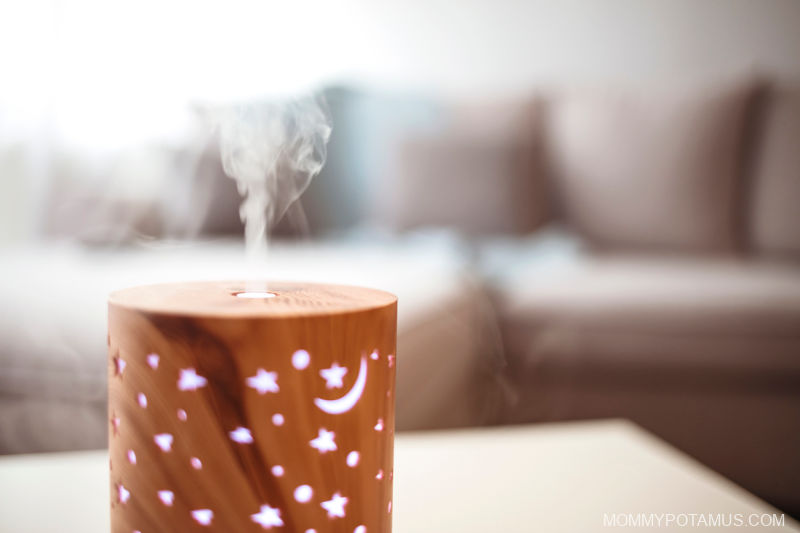
Essential Oils for Diffusing (2 And Under)
These oils are too potentially irritating for topical application, but are considered safe for diffusing.
- Jasmine Absolute (Jasminum sambac) – Calming, floral scent
- Lemongrass (Cymbopogon flexuosus) – Clean citrus scent, great addition to homemade bug spray
- Ylang Ylang (Cananga odorata) – Relaxing, helpful for destressing
Special Case: Eucalyptus Radiata and Eucalyptus Globulus
There’s been a lot of controversy about whether or not eucalyptus – which contains a constituent called 1.8 cineole – is safe for use with children. Too much can sometimes act negatively on the temperature receptors of children’s lungs and cause slowed breathing, so it’s often avoided.
However, for children under three, Robert Tisserand says that eucalyptus globula and radiata can be diffused (1-2 drops) and applied topically at a concentration of 0.5% (2 drops in 4 teaspoons carrier oil).
“I believe these guidelines are super-safe, if anything a little over-cautious. If you’re wondering about other types of eucalyptus oil, E. citriodora is safe for young kids, though is less likely to be therapeutic, and the safety of E. dives is uncertain,” he wrote on his Facebook page.
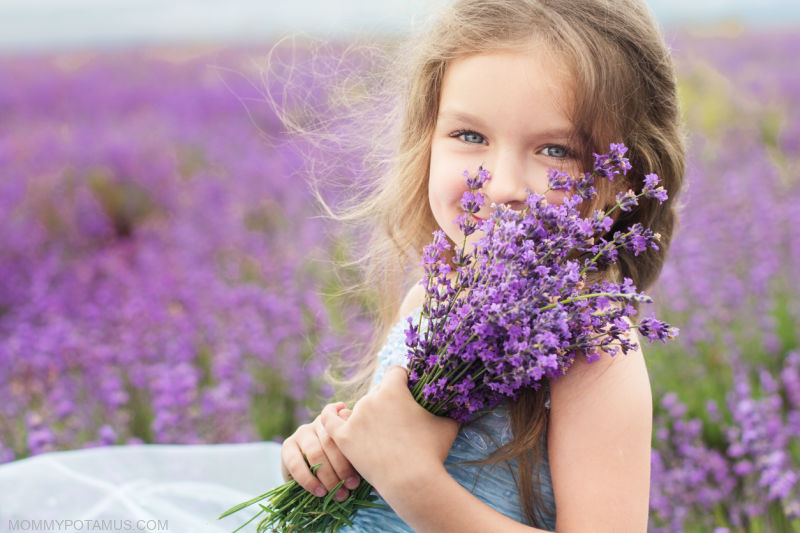
Essential Oils That Are Considered Safe For Children 2-6
All the oils listed above are also considered safe for children ages two to six. In addition, some of the oils designated previously designated as “for diffusing only” can be applied topically – when properly diluted – after age two: )
- Jasmine Absolute (Jasminum sambac) – Max recommended dermal use is 0.7% (about 4 drops in two tablespoons carrier oil).
- Lemongrass (Cymbopogon flexuosus) – Max recommended dermal use is 0.6% (about 7 drops in four tablespoons carrier oil).
- Ylang Ylang (Cananga odorata) – Max recommended dermal use is 0.8% (about 5 drops in two tablespoons carrier oil).
Special Case: Peppermint and Eucalyptus Essential Oils
Another favorite oil for respiratory support is peppermint (Mentha x piperita), which like eucalyptus contains the constituent (1.8 cineole) that sometimes acts negatively on the temperature receptors of children’s lungs and causes slowed breathing.
According to Robert Tisserand, for kids 3-6 years old peppermint can be applied topically at a concentration of 0.5% (2 drops in 4 teaspoons carrier oil) or diffused with care. In the comment section of the above post, he clarified that “with care” means about two drops in an essential oil diffuser.
For eucalyptus, he recommends a 1% maximum dilution of eucalyptus globula or radiata (1 drop in 1 teaspoon carrier oil) for children ages three to six.

Essential Oils That Are Considered Safe For Children 6 to 10
All the oils listed above are also considered safe for children ages six to ten. In addition, some of the oils designated previously designated as “for diffusing only” can be applied topically – when properly diluted – after age six.
Peppermint, eucalyptus radiata, and eucalyptus globulus can be topically applied at a dilution ratio of 1.5% (1 drop per teaspoon of carrier oil).
Rosemary (Rosmarinus officinalis) is also considered appropriate after age six. The recommended maximum topical dilution is 4% (4 drops per teaspoon carrier oil) .
Want more research-backed natural remedies?
No problem, I’ve created a free ebook for you – Kitchen Apothecary: 25+ Natural Remedies Using Ingredients From Your Pantry – as a gift for signing up for my newsletter. You’ll also get updates when I post about safe essential oils for pregnant/breastfeeding mamas, exclusive gifts and coupons (I was able to give away a jar of free coconut oil to anyone who wanted it recently!), plus other goodies.
Sign up using the form below.
